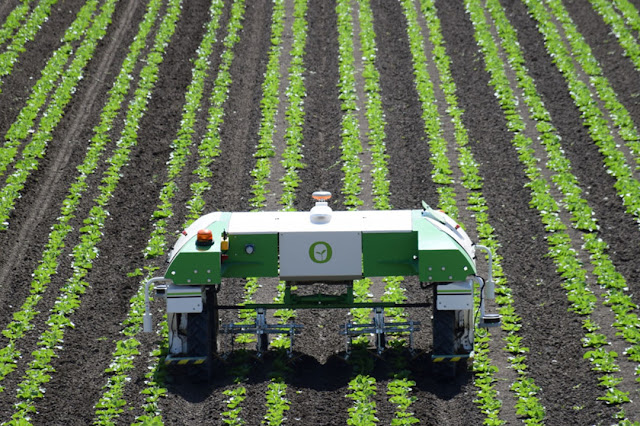Industrial Enzymes: The Growing Significance of Enzymes in Modern Industrial Applications
 |
| Industrial Enzymes |
Industrial catalyst play an important role in
industries like food & beverages, detergents, textiles and more. They
catalyze biochemical reactions under specific conditions and help carry out
various industrial processes with high efficiency and low environmental impact.
Some key features of industrial catalyst are that they are biodegradable,
eco-friendly and highly specific in their actions.
Food & Beverage Industrial Enzymes
One of the largest applications of industrial catalyst is in the food and
beverage industry. Enzymes are used at various stages right from processing raw
materials to final product manufacturing. In food processing, they are used for
brewing, baking, fruit and vegetable processing. Industrial
Enzymes preparations help extract juices from fruits,
vegetables and herbs. They are added to dough to improve texture and loaf
volume in bakery products. Proteases and lipases are applied in cheese
manufacturing for flavor development. Other enzymes like amylases and
glucanases are employed in starch processing to modify texture and mouthfeel.
The beverage industry utilizes enzymes in production of alcohol, soft drinks,
fruit drinks and dairy-based beverages. Amylases are widely used for
liquefaction in beer and ethanol manufacturing. In fruit juices, pectinases and
cellulases break down cell walls to extract more juice from pulps. For dairy,
proteolytic enzymes help accelerate coagulation in cheese production. Lipases
are added in butter and ghee making for flavor enhancement. Overall, enzymes
significantly boost productivity and quality in food and beverage sectors.
Detergent Industry
Being one of the major industrial enzyme consumers, the detergent industry
utilizes various hydrolase enzymes. Amylases, proteases and lipases play a
chief role in bio-catalyzing stain removal processes. Amylases help dissolve
starch-based stains from clothes and dishes. Proteases break down protein-based
stains like food residues, sweat, blood or grass. Lipases have solvent action
on fatty, oily or greasy stains. Today's advanced detergents contain optimized
enzyme formulations that work synergistically for ultra-efficient cleaning even
under variable water conditions.
Enzymes allow detergents to work effectively at lower temperatures, thereby
saving energy. They also enable use of less harsh surfactants, reducing
environmental load. Overall, enzymes have enabled greening of detergent
processes through high performance and sustainability. Their usage has grown
exponentially as consumers demand bio-friendly products that deliver with low ecological
footprint. Major detergent makers extensively rely on tailored enzyme
formulations for improved cleaning results.
Textile Industry
In textile processing, enzymes bring efficiency gains at pre-treatment,
dyeing and finishing levels. Amylases and cellulases help desizing by removing
starch residues from warp yarns. This readies the fabric for downstream
processes. During dyeing, several hydrolases like peroxidases and laccases act
as catalysts for enhanced color yield. They facilitate deep penetration of dyes
into fabric structures.
For finishing operations like softening, anti-pilling and wear resistance,
specialized carbohydrases and proteases are used. These enhance tactile
properties and overall quality. Further, enzymes play a big role in bio-polishing
of cotton and linen fabrics for a naturally softened hand feel. Their
application prevents use of harsh chemicals for many textile effects. Overall,
enzymes have vastly improved efficacies, reduced water and energy usage in
textile wet processing over the past few decades.
Pulp & Paper Industry
Pulping involves use of cellulase enzymes to disintegrate raw wood material
into fibers and dissolve lignin bonds in the composition. Xylanases boost
pulping efficiency by targeting hemicellulose linkages. This results in less
energy intensive processes with higher yields. Similarly, bleaching uses
oxidative enzymes like laccases and peroxidases as eco-alternatives to chlorine
for decolouration.
In papermaking, pectinases and hemicellulases help improve sheet properties by
modifying fiber structures. Amylases desize paper by removing starch coatings
pre and post-weaving. Hemicellulases play a role in pitch control solutions to
reduce wood residuals on paper surfaces. Thus, enzymes offer biotechnological benefits
of sustainability, performance and cost optimization at all levels of paper
manufacturing and finishing.
Other Applications
Besides major sectors discussed, industrial catalyst find use in various
niche applications. In leather processing, proteases help remove non-collagen
proteins from animal hides without compromising quality. Their use has replaced
chromium-based soaking earlier employed. For biofilm removal in oil pipelines,
amylases effectively dissolve polysaccharide skins.
As industrial biocatalysts, enzymes enable
green manufacturing across industries. Their demand will further rise given
advantages over chemical catalysts. Innovation in tailored enzyme formulations
will expand applications to new areas like biofuels, bioplastics etc. Overall,
the expanding role of industrial catalyst underscores their importance in
transforming manufacturing operations sustainably.
Get more insights on Industrial
Enzymes



Comments
Post a Comment